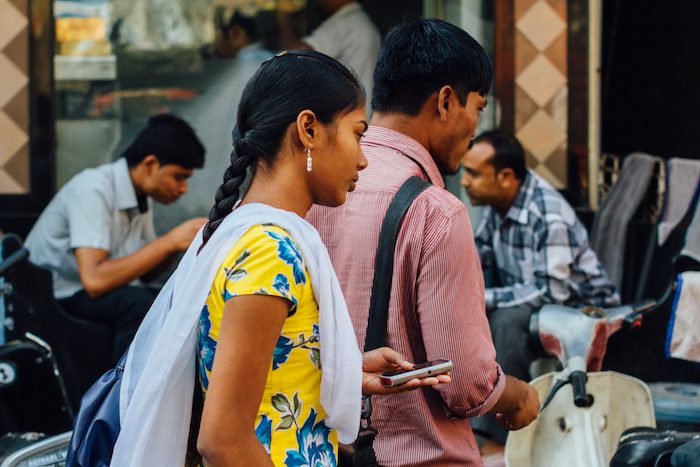
ScoopWhoop appeared at the end of 2013 and at first looked like a clone of BuzzFeed. Everything from the style to the content was very similar to the U.S. company’s early incarnations, before BuzzFeed’s moves towards more serious content. At first, many people even wondered if it was BuzzFeed’s own creation. ScoopWhoop hasn’t gone unnoticed by senior figures at BuzzFeed either.
While BuzzFeed India currently employs 12 people, ScoopWhoop’s staff count stands at 135, all based in a large converted farmhouse on the southwestern outskirts of Delhi, near the international airport. One of its cofounders, 27-year-old Sattvik Mishra, says that ScoopWhoop has a total monthly audience of up to 200 million, including 70 million on its own platform. (The rest are on Facebook or other channels.) The whole thing began as an experiment but quickly became a full-time gig. Mishra’s former employer, an advertising agency in Delhi, is a key investor in ScoopWhoop.@kenbensinger my actual fav is http://t.co/ojeKzmgqXy
— Ben Smith (@semaforben) April 4, 2014
Like BuzzFeed, ScoopWhoop began by producing what Mishra calls “social entertainment,” with which it built a huge audience of young people eager to consume and share the kind of distinctively Indian content that reflects their own lives and experiences. Mishra claims revenues of around $2.5 million in its current fiscal year, largely coming from advertising and branded content. So far, so BuzzFeed.
Two and a half years into its existence, ScoopWhoop is also moving into news, hiring a dozen journalists and building, separately, a team that has begun to produce edgy, Vice-style documentaries about difficult, contemporary Indian subjects. The first one is about militants in Indian-administered Kashmir. By the end of this initial hiring process, there will be at total of around 35 people working on harder news.
Mishra maintains that this does not represent a shift for his company. “The DNA of the company won’t change,” he says. “We are just adding more layers.” There are now verticals for general news, politics, and sports, as well the documentaries, but ScoopWhoop is not abandoning what made it successful in the first place: food and fashion content is also expanding. Mishra is conscious of credibility. “The bread-and-butter will always be entertainment content,” he admits. “But we realised that if wanted to be a media company worth its salt, we had to do news.”
Malini Agarwal — a dancer, radio DJ, digital strategist, and gossip columnist, among other things — began what was then the MissMalini blog five years ago as a response to what she considered a misleading image of India, one that was popularised by the film Slumdog Millionaire. “I wanted to document what the Indian cool kids were doing,” she says.
Now MissMalini is a digital magazine and media house, based in northern Mumbai, with 25 full-time employees. The office has four separate Internet connections plus a 4G dongle — insurance against India’s occasionally unreliable connectivity. It has a largely young, female audience — 4 million unique monthly users to its main website — that is attracted to its mix of Bollywood gossip, fashion, and lifestyle content. Agarwal is still the face of the brand, ubiquitous and popular on social media, where she is seen and heard at glamorous events all over the world. But behind the smiles, she has built up unrivaled access to the entertainment industry, which gives her site, social channels, and TV show content that is hard to find elsewhere.
MissMalini also generates revenue from branded content, social media consulting, and other sources. Agarwal describes it as a “multiplatform media content-creation company” which brings in $1 million a year; the company is currently seeking up to $6 million in venture funding to help them further scale up and improve the technology that powers their services. It will also help pay for content in languages other than English, or for audiences who look beyond Bollywood.
MissMalini has no plans to do traditional news — although Agarwal doesn’t rule it out — but it will produce more verticals and look at longer-form opinion pieces about subjects its audience cares about.
Apart from the ability to create the content, both fun and serious, that is extremely popular among younger Indian digital audiences, both ScoopWhoop and MissMalini have one major advantage over their foreign competition. “There is the idea of a homegrown brand that everyone can relate to here,” says Agarwal. “There was no Indian young version of, say, Ryan Seacrest or Barbie or Hannah Montana — we had no young brand of that sort, right out of India.”
There are many elements of running a media business that are more difficult for foreign companies whose decisions are made in London or New York: building long-term relationships with the major players in Bollywood; leveraging local contacts to find suitable locations; navigating red tape and infrastructural issues. ScoopWhoop, MissMalini and SWEN’s founders, CEOs, and staff are firmly based in India. Home advantage is a substantial asset in India and as these companies grow, that advantage might be too great for their foreign competitors.
Hasit Shah is a former Nieman-Berkman Fellow in Journalism Innovation who writes the Digital India newsletter.